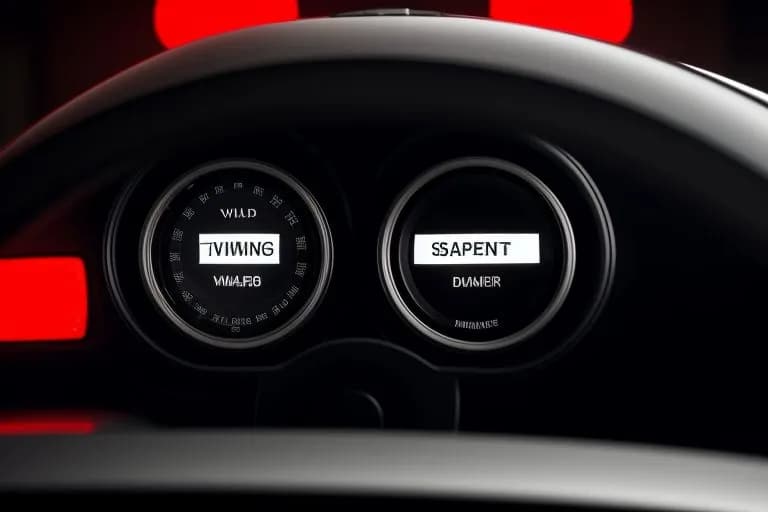How Many Miles Should a New Car Have? [Answered]
Discover the acceptable mileage for a new car and learn what factors influence it. Set expectations for brand-new cars and understand why some mileage is normal.
How Many Miles Should a New Car Have?
When buying a brand-new car, one question often comes to mind: how many miles should a new car have? It's natural to expect minimal mileage, but there are acceptable ranges for new vehicles. Understanding this can ensure you make an informed decision while avoiding unnecessary concerns.
In this article, we'll answer this critical question, explore the factors behind new car mileage, and set realistic expectations for your purchase. Whether it's the miles from factory to dealership or test drives, we’ve got you covered.
Mileage for a New Car: What Does It Tell You About a Car?
The mileage on a new car tells a story about its journey from the manufacturing plant to the dealership and possibly test drives. While a completely zero-mile car might sound ideal, some mileage is inevitable due to transportation and inspections. These miles typically range from 10 to 200 miles for most new cars.
Understanding what this mileage signifies can provide peace of mind and clarity when inspecting your potential purchase. It's also an opportunity to ask questions about the car's history before committing to the purchase.
The Myth of Zero Miles: When Is a Car Considered New?
Many buyers expect zero miles on a new car, but that’s a myth. In reality, vehicles accrue mileage during transportation, quality control inspections, and dealership test drives. A car is still considered new if its mileage falls within an acceptable range, generally below 200 miles.
Most manufacturers and dealerships ensure these miles don’t affect the vehicle’s condition or warranty. If a car has higher mileage than expected, it's worth asking about its usage to confirm there are no concerns.
Delivery Mileage: How Many Miles Are Too Many for a New Car?
Delivery mileage includes the distance traveled during shipping, loading, unloading, and occasional test drives. For most new cars, anything below 200 miles is considered normal. However, if the mileage exceeds this range, ask your dealer for an explanation.
High mileage could indicate extended test drives or use as a demo car. While this doesn’t necessarily make the car less valuable, ensure you receive proper documentation and possible discounts for such situations.
Setting Expectations for Brand-New Cars
For most new car buyers, setting expectations is key. While 10 to 50 miles is common, don’t be surprised if it’s slightly higher. Dealerships often allow test drives to showcase the vehicle’s features, adding to the odometer reading.
Mileage Considerations for Test Drives
Test drives are an essential part of the car-buying process. However, some vehicles are used more frequently than others for this purpose. When buying a new car, check if it has been a popular test drive option and whether the dealer offers discounts for the extra mileage.
Ideal Mileage Range for a New Car
Ideally, a new car should have between 10 to 200 miles. This range accounts for all standard processes before the car reaches your hands. Anything outside this range warrants a discussion with the dealer.
Factors Influencing New Car Mileage
Several factors influence the mileage on a new car:
- Transportation: Shipping from the factory to the dealership often adds miles.
- Inspection: Quality control tests ensure the car functions correctly.
- Test Drives: Potential buyers may take the car for short drives.
- Demo Use: Some cars are showcased for demonstrations, accumulating mileage.
Balancing Expectations and Realities of Miles on New Cars
Understanding the realities of mileage can help balance your expectations. While minimal mileage is preferable, slight variations are normal and don’t diminish the car’s value. Always ensure any extra mileage has a valid explanation and doesn’t impact the warranty or pricing.
What is Higher Mileage for a New Car?
Higher mileage on a new car usually refers to vehicles with over 200 miles. This could be due to multiple test drives, demo use, or transportation factors. Always inquire about the reasons behind such mileage to ensure transparency and fair pricing.
Demo Cars
Demo cars are often used by dealerships to showcase features and performance. These cars may have higher mileage but are usually sold at discounted rates. Ensure thorough checks and negotiate appropriately when buying a demo car.
Used Cars
While used cars naturally have higher mileage than new cars, it’s essential to evaluate their condition, maintenance history, and overall value. Check the vehicle's history using tools like VIN Decoder or Window Sticker Lookup.
Auto Loans & Financing
When financing a new car, mileage doesn’t typically affect loan terms. However, ensure you negotiate a fair price that aligns with the mileage and any discounts applicable for higher mileage vehicles.
The Impact of Delivery Routes on Mileage
Delivery routes can significantly influence the mileage of a new car. Vehicles transported over long distances or through complex logistics networks may accumulate more miles than those delivered directly from a nearby factory. Regional factors, such as transportation hub locations, also play a role in determining final odometer readings.
When considering a new car, it's essential to ask your dealer about the delivery process. Understanding these logistics can help you gauge whether the mileage is within acceptable limits.
How to Negotiate for High-Mileage New Cars
If a new car has higher mileage than expected, it’s an opportunity to negotiate. Dealers often provide discounts or additional perks for vehicles with extra mileage, such as extended warranties or free service packages. To make the most of this situation, approach the negotiation with the following steps:
- Inquire about the reason for the higher mileage, such as test drives or demo use.
- Request documentation or maintenance records if the car was used extensively.
- Compare the pricing with other similar models to determine a fair discount.
Effective negotiation can turn a high-mileage situation into a cost-saving opportunity.
Understanding the Role of Test Drives and Demos
Test drives and demo use are integral to the car-selling process. While these activities add mileage to the vehicle, they also serve to showcase its features and performance to potential buyers. Cars used more frequently for demonstrations might have odometer readings above 200 miles but are typically well-maintained.
When purchasing such a car, ensure that:
- It hasn’t experienced excessive wear and tear.
- There’s transparency about its usage history.
- The price reflects the additional mileage appropriately.
Table: Common Mileage Scenarios for New Cars
The following table summarizes common mileage scenarios and their implications:
| Mileage Range | Possible Causes | Considerations |
|---|---|---|
| 10-50 miles | Transportation and basic inspections | Normal for most new cars |
| 51-200 miles | Additional inspections or light test drive use | Still considered new; inquire if closer to 200 |
| 201-500 miles | Frequent test drives or demo use | Negotiate for discounts and inspect thoroughly |
| 500+ miles | Extended demo or promotional use | May require deeper inspection; consider it a high-mileage new car |
How Dealership Policies Influence Mileage
Dealership policies can greatly influence the mileage of a new car. For instance, some dealerships prioritize test drives to ensure buyers experience the vehicle before purchasing, which naturally increases odometer readings. Other dealerships may limit test drives to preserve a car’s 'new' status.
When choosing a dealership, consider asking about their test drive and demo policies to align your expectations with their practices.
Mileage and Car Warranty Implications
New car warranties typically begin at the mileage recorded when the vehicle is sold. If the car has higher mileage due to dealership or transportation factors, ensure this is reflected in the warranty coverage. For example, a vehicle with 150 miles on delivery should still offer a warranty starting from that mileage, not zero.
Discuss this with your dealer to ensure the warranty terms meet your expectations.
Conclusion: Making an Informed Decision
Understanding the factors that contribute to new car mileage helps set realistic expectations. While minimal mileage is ideal, slight variations are often unavoidable and typically harmless. Always communicate openly with your dealer, inquire about mileage specifics, and negotiate when necessary to ensure you get the best value for your purchase.
By staying informed, you can confidently navigate the car-buying process and drive away in a vehicle that meets your needs.
Our Services
Window Sticker
Print window sticker for your vehicle
VIN Decoder
Decode any vehicle manufacturer
Classic VIN Lookup
Decode VINs for classic and vintage vehicles
License Plate Lookup
Search license plate information
VIN Check
Decode any vehicle in US states
Build Sheet by VIN
Get detailed build sheet for your vehicle
Dealers
Unlimited vehicle history reports
Paint Code by VIN
Find your vehicle's exact paint color code
VIN Explorer
Explore detailed vehicle information by VIN
Warranty Check
Check warranty information by VIN
Vehicle Recalls
Understanding Vehicle Recalls: A Complete Guide

Ethan J. Caldwell
Ethan James Caldwell is a graduate of George Washington University (GW). Born and raised in Washington, Ethan has had a lifelong passion for cars, motorcycles, and all things automotive. From a young age, he was captivated by the mechanics, design, and culture surrounding vehicles, which eventually inspired his career. Ethan currently drives a silver 2005 Honda Accord, a testament to his appreciation for reliable and timeless vehicles.
Frequently Asked Questions
Acceptable mileage for a new car typically ranges from 10 to 200 miles, accounting for transportation, inspections, and test drives.
New cars accumulate miles due to transportation, quality control inspections, and test drives at dealerships.
While uncommon, over 200 miles can occur in demo or frequently test-driven cars. Always inquire about the reasons behind higher mileage.
No, mileage accrued during normal dealership processes doesn’t affect the warranty as long as the car is sold as new.
Yes, higher mileage on a new car is a valid reason to negotiate for discounts or additional benefits.
Our Blog Articles
Discover insights about vehicle history, maintenance, and buying guides

VIN Swap Meaning: What You Need to Know
Understand the VIN swap meaning, its risks, and how to protect yourself from fraud. Get the facts on swapped VINs and how to check vehicle history.

ABS and Traction Control Light On: What You Need to Know
Is your ABS and traction control light on? Learn the common causes, what to do, and how to keep your vehicle safe. Get expert advice on ChassisVIN.com.

Check Cars Owner: Find Owner Information Easily
Need to check cars owner? Use ChassisVIN.com to quickly find owner information, vehicle history, and more. Get peace of mind before buying or selling a car.